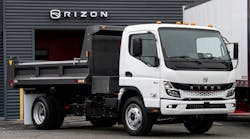Quantifying greenhouse gas emissions through the use of “carbon accounting” methods is an emerging issue for motor carriers—especially with shippers wanting to identify the greenhouse gas emissions generated by their supply chains. The problem, however, according to a new report, is that there’s still too much variability in both the methods and the data being used to calculate carbon emissions.
“Variability, as we moved forward in terms of measuring and reducing carbon emissions, is going to have a greater and greater impact,” Mike Tunnell, director of environmental research for the American Transportation Research Institute (ATRI) told FleetOwner.
“A lot of [carbon emission] reporting now going on is still very general, and as data and reporting standards are not standardized, we’re not necessarily getting a truce ‘apples-to-apples’ comparison in many cases,” he explained.
“For example, the methodology for measuring carbon emissions from fuel consumption is well established, but nuances can affect those calculations,” Tunnell cautioned. “How much biodiesel in the fuel being consumed impacts carbon emissions, but if you don’t have accurate numbers of the biodiesel amount in the fuel, that can impact your carbon tally.”
A new report on this issue by ATRI – dubbed “The Synthesis of Carbon Accounting Tools” – involved the collection and analysis of carbon models and formulas, and interviews with environmental assessment and reporting organizations.
According to the report, there is a growing need for data and model standardization and identified areas where inconsistencies in the quantification tools and models exist.
“For many motor carriers, the U.S. EPA SmartWay Partnership truck model is the most widely recognized tool for quantifying greenhouse gas emissions,” said Tunnell. “This model calculates emissions generated from a company’s on-road vehicle fleet. However, an individual company’s carbon footprint encompasses more than just its on-road vehicle fleet.”
For example, quantifying the carbon emissions generated by office space and terminals, through metrics such as electricity use, could be misleading. “Although emission factors for the purchase of electricity are available for locations throughout the U.S., the greenhouse gas emissions generated from electricity purchased in one part of the country can be twice as high as the same amount of electricity purchased in another,” the report noted.
Other areas of carbon emission calculation concern include: mobile equipment used at company facilities, such as yard tractors and forklifts; stationary equipment used at company facilities, such as furnaces, generators and other on-site fuel-burning equipment; and air conditioning and/or refrigeration systems used in trucks and trailers as well as at company facilities.
“Emission factors for the various types of fuels and refrigerants used in this equipment are generally available; however, subtle differences exist among the various accounting tools,” the ATRI report stated. “For instance, emission factors for biodiesel were not consistent and leakage rates among refrigerants varied by a factor of five. Refinements to these methodologies could improve their applicability to the trucking industry.”


